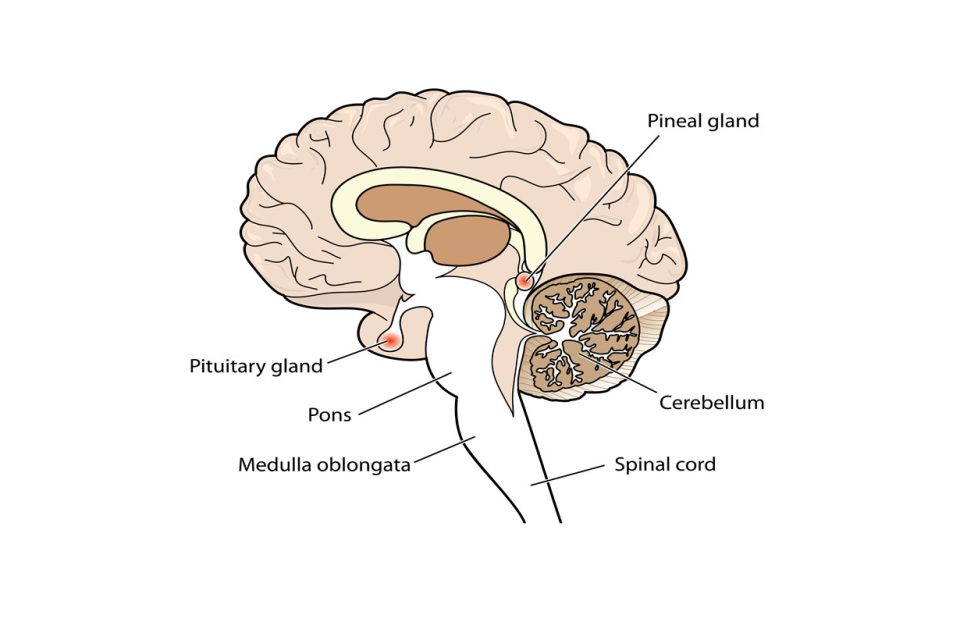
What is Pineal Gland?
The pineal gland
also called the epiphysis cerebri, is an endocrine organ located in the brain. Its primary function is to regulate the sleep cycle and influence sexual development. It is a reddish-gray glandular structure that forms the roof of the third ventricle in the brain, between the two lateral ventricles, tucked in a groove near the thalamic bodies. Its body is relatively the size of a grain of rice; it’s shaped like a pine cone and has an infindibular stalk projecting from it. The tissues that make up the pineal gland include neuroglial cells, pinealocytes in the lobular parenchyma, and preganglionic and sympathetic fibers. Even though it’s located within the cranial cavity, the pineal gland in its entirety is not influenced by the blood-brain barrier. Instead, it has a profuse amount of blood flowing to and from it.
The entire gland is enclosed in a protective pial capsule. The pineal gland stops growing at roughly two years of age; at puberty, it will begin to calcify, a process called pineal atrophy. At this point, the pineal gland becomes less clinically significant. However, its weight still continues to gradually increase due to the comparative mass of calcified tissue.
Melatonin is one hormone that the pineal gland produces. It is a derivative of serotonin, as well as the amino acid tryptophan,which affects the sleep patterns and seasonal functions of the body. Melatonin production is stimulated by darkness and inhibited by light. Both of which are detected by photosensitive cells in the retina.
–
Pinoline, a beta-carboline, is also produced by the pineal gland. The pineal gland is innervated by the first two cranial nerves, by which it receives sympathetic neural signals from the ganglion in the upper portion of the neck. It is also innervated by the trigeminal nerve, which contains the Pituitary Adenylate Cyclase-Activating Polypeptide. This neuropeptide is said to have hypophysiotropic characteristics and influences the human cutaneous vascular system.
If the pineal gland is traumatized during childhood, it may cause the patient to reach puberty at an early age, thus supporting the theory that it inhibits sexual development. In some cases, patients will show a mass around the pineal gland. However, the majority of pineal tumors are rare. They tend to develop from secluded embryonic germ cells. Because melatonin is said to inhibit sexual development, even despite the rarity, medical professionals have been able to significantly improve the prognosis. Sudden Infant Death Syndrome has been said to be linked to pineal disorders; however, there is no firm research to support this theory.
Image Caption: Pituitary and Pineal Glands. Credit: Wikipedia












